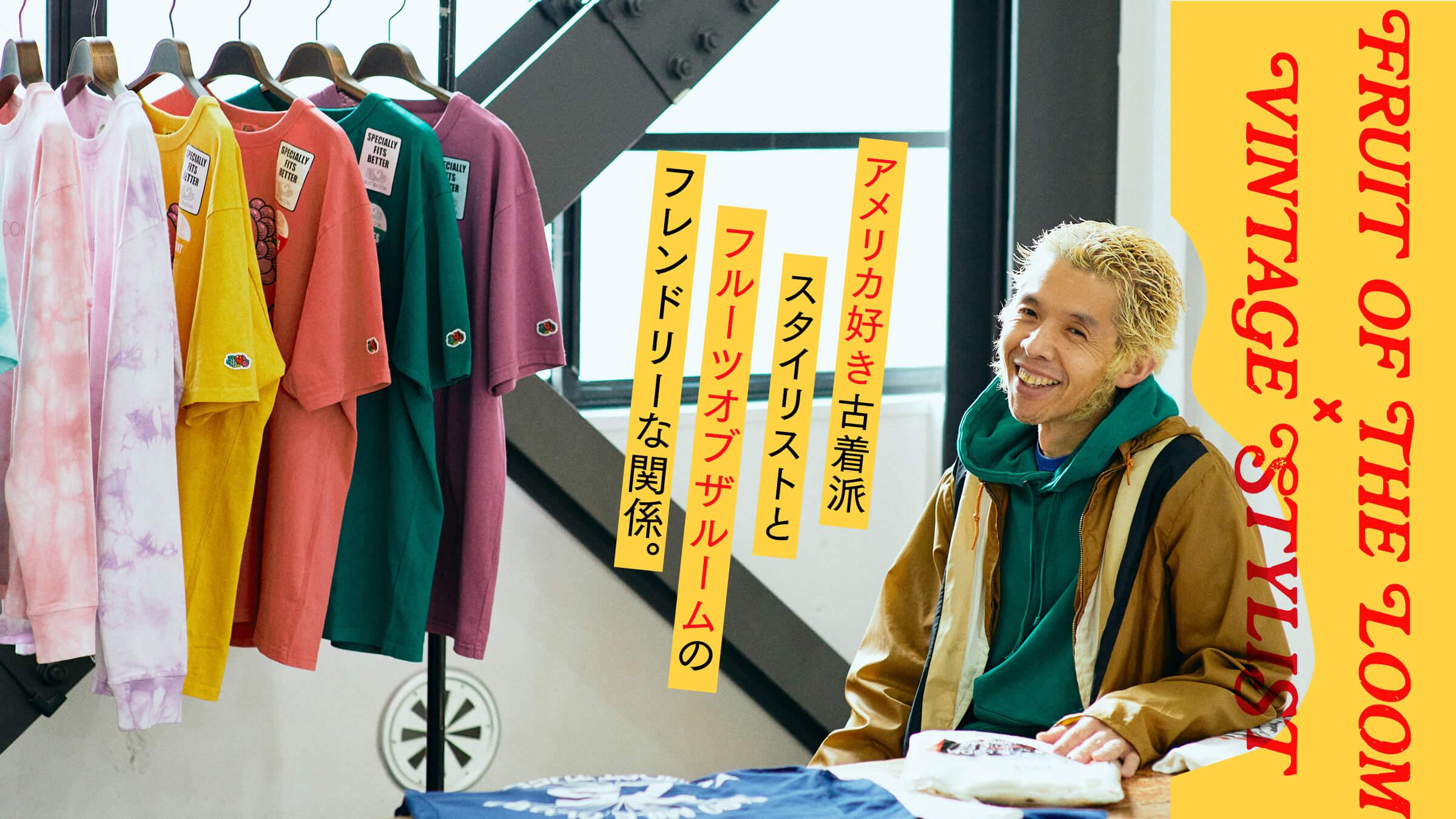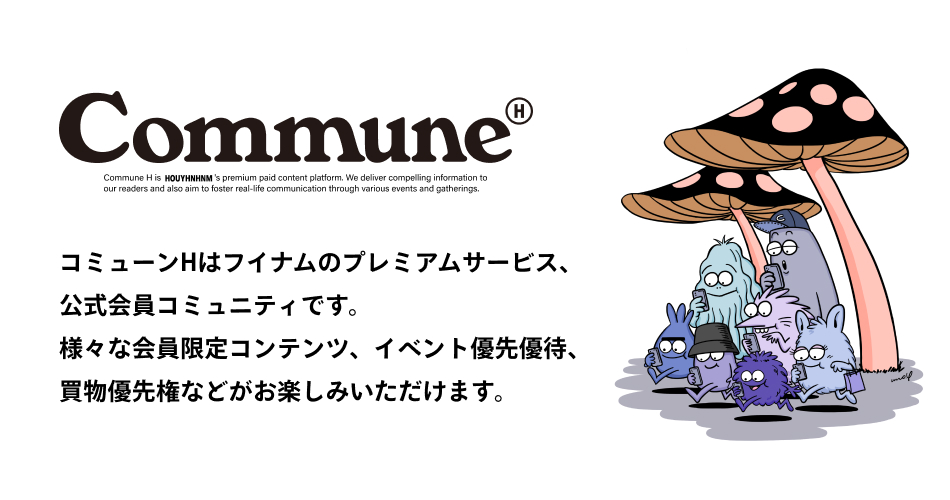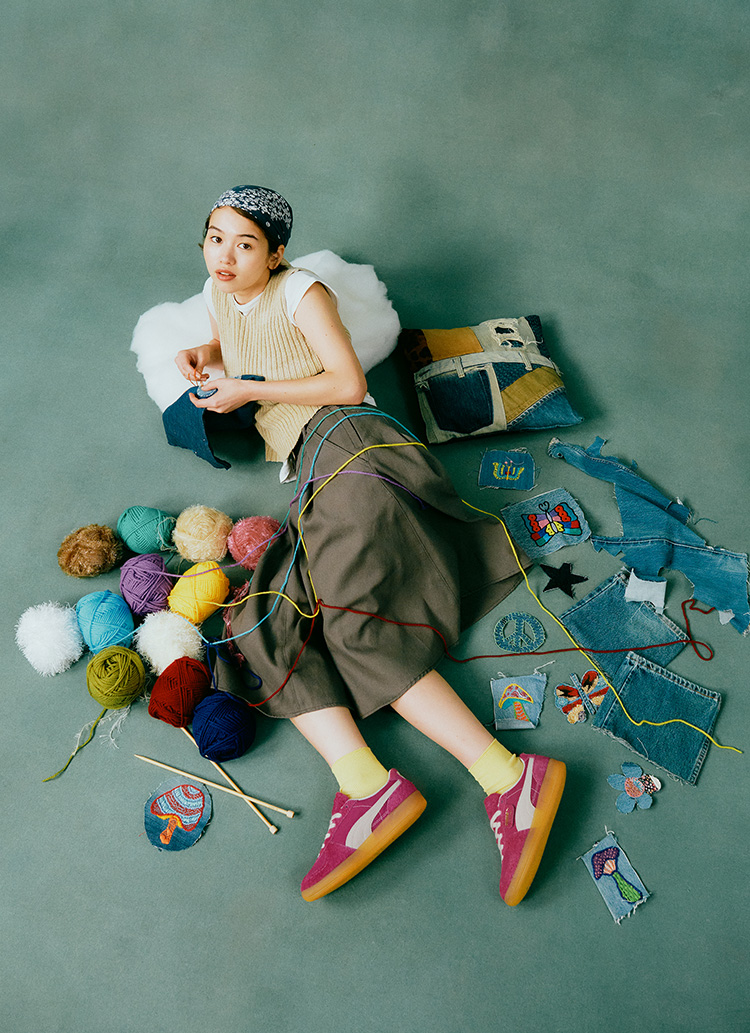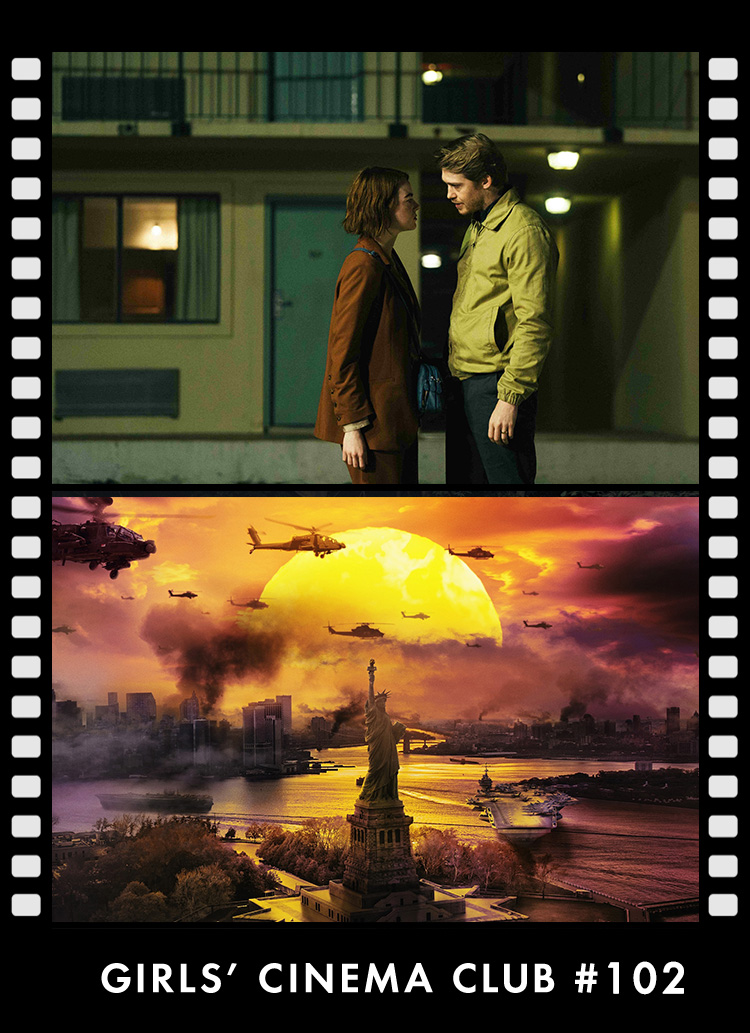PROFILE

Born in 1972 in Kyoto. Stylist. He has a deep knowledge of vintage and antique clothing, and his styling incorporating vintage and antique items has been featured in magazines and advertisements, and he has many fans among people in the fashion industry. He is also a well-known figure in the vintage clothing industry, having released a total of 10 books introducing vintage items, "THE SUKIMONO BOOK," which fully expresses his own sense of vintage items.
The so-called orthodox American smell that I feel from the pack t. I like that.

I heard that you first became interested in clothes when you were in the upper grades of elementary school.
Harada:That's right. My hometown is in the Shinkyogoku area of Kyoto, and in the shopping district there and around Kiyamachi, which is a little further away, there were select stores selling American import items, as they are called today. In the 1980s, when I was in the upper grades of elementary school, the number of such shops was just beginning to increase. There were workwear such as "Carhartt" and "Dickies," sweatshirts, and flashy-colored "Converse" All-Stars. I remember seeing these things and thinking how cool they were, even as a child. Of course, it wasn't until a little later that I saved up the money to buy them myself.
Was Fruit of the Loom there as well?
Harada:Of course there was. The logo is the exact fruit, and it is easy to understand and colorful. I think that's why it left such a strong impression.

I see. Harada-san, you must have had many opportunities to encounter Fruit of the Loom at vintage clothing stores.
Harada:I guess I have a rather strong impression of underwear. When I was digging around in the old clothes, I found not only tank tops and T-shirts, but also pajamas and other items. Or, "Oh, there are dress shirts, too! I found all kinds of things. This unexpectedness is also interesting, and when I talk about it at secondhand clothing stores or exchange information with friends, saying, "I found this kind of fruit," they remember it and come back with more rare items.
You are also involved in the production of the history page of the official Fruit of the Loom website.
Harada:I collected the items listed in the chronology of the brand's history by going around thrift stores for about a week, and it was only from about the 1970s that the variety of items started to increase. Even before that, shirts from the 40's and military shirts from the 50's were found, so it was interesting to dig through the wide range of the brand, which is more than just the image of a T-shirt/underwear brand generally accepted by the public.


This 3-pack of A-shirts was purchased a few years ago. It is a tank top, but what is noteworthy is its size.
Harada-san brought some of his favorite items from his collection for this interview.
Harada:This tank top is dated about 50's-60's I would guess. The numbers on the bag are...what are they? They don't seem to be the prices of the time. What is more noteworthy is the size. What a 50 (equivalent to 6L in Japanese size)! When I actually tried it on, I found it to be a very thick and very long silhouette. I think I bought it because I thought it would look cute when used in a girl's styling. There is a blue line enclosure on the tag, but when it gets older, this is sometimes changed to an embroidered name. So, in the case of the T-shirt, on the contrary, I brought something quite new.

Printed with Barbara Krueger's artwork, which is said to be the original source of the SUPREME box logo. According to the copyright, it was made in 1995.
Harada:I bought it at a thrift store at the time, but if you think about it, it was actually a current item, not vintage clothing (laughs). As for the silhouette, heavy bodies were popular at the time, so the neck was a bit choked, which was also basic for the 90's. I had no idea what Barbara Krueger was at the time. At the time, I had no idea what Barbara Krueger was, but I guess I liked the design (laughs). I bought this one as an outfit, and since it was around that time, I think I would have layered it with a plaid shirt or something like that.

From the print, it appears to be a memento of the 75-mile crossing of the 100-mile goal.
Harada:This one is also from the 90's. It has the word BEST on it, so it has a cotton-poly blend body, but I think it's probably from a running club. For a while, I only collected T-shirts for jogging and marathon running events, so maybe that's why I bought it. And maybe I simply liked the design or something like that.

Novelty from the movie "The Peacemaker". Found at home in perfect dead stock condition. The tag has the notation "Screen Stars," which was launched in the 1970s as a line of fashion items.
Harada:I remember receiving it at a preview screening...although I don't remember anything about the film itself (laughs). (laughs). They used to give them to people back then for promotional purposes. The tag reads "Screen Stars" and a fruit, and the body is a round body. As you can see, I never put my sleeves on it, but I think this design is fresh and new now.
Harada-san, what are your criteria for choosing a T-shirt?
Harada:Well, when it comes to printed T-shirts, it's the design, isn't it? And then there are the fashions that come and go as they come...again, there may not be a uniformity or standard. That's probably why I remember when I bought this when I pull it out like this. Also, this time I realized that T-shirts are not really included in my collection...T-shirts are not for collection, but only for wearing.
T-shirts are daily wear, aren't they?
Harada:So when I go to the U.S., the first thing I do when I arrive is go to Kmart or Wal-Mart and get a Fruit of the Loom T-shirt and pants. That's the first thing I do. There are a lot of colors to choose from over there, so if I find a color I like, I buy two of each. In my case, I like to be flashy, so I buy blue, green, purple, and so on. I also often wear white T-shirts in two-packs during the summer.

What are the advantages of "Fruit of the Loom" that can only be understood by actually wearing it?
Harada:T-shirts have a trend of silhouette, thickness, and texture depending on the era, but Fruit's T-shirts are more moderate than those of other brands. I personally like the balance of the 90's T-shirts I mentioned earlier, and the current products seem to be close to that. Some brands of pack T's have a strong underwear feel, don't they? I have a hard time wearing them because the armholes are tight and I sweat a lot.... That's why I tend to choose larger sizes, such as XL, and more interesting designs. I tend to buy flashy things whenever I find them. Oh, there is a standard, isn't there (laughs)?
- 1
- 2









